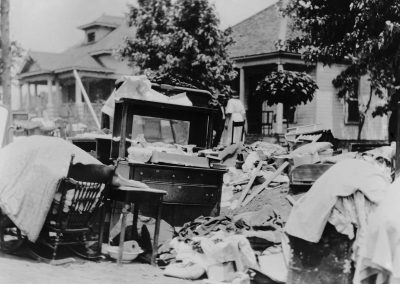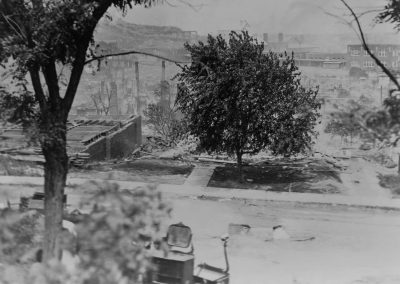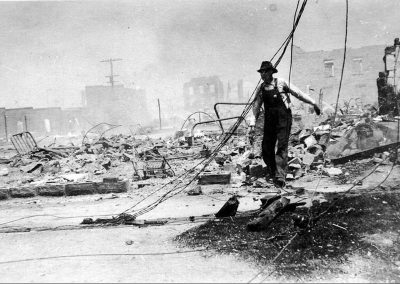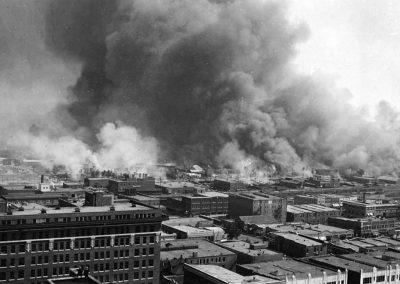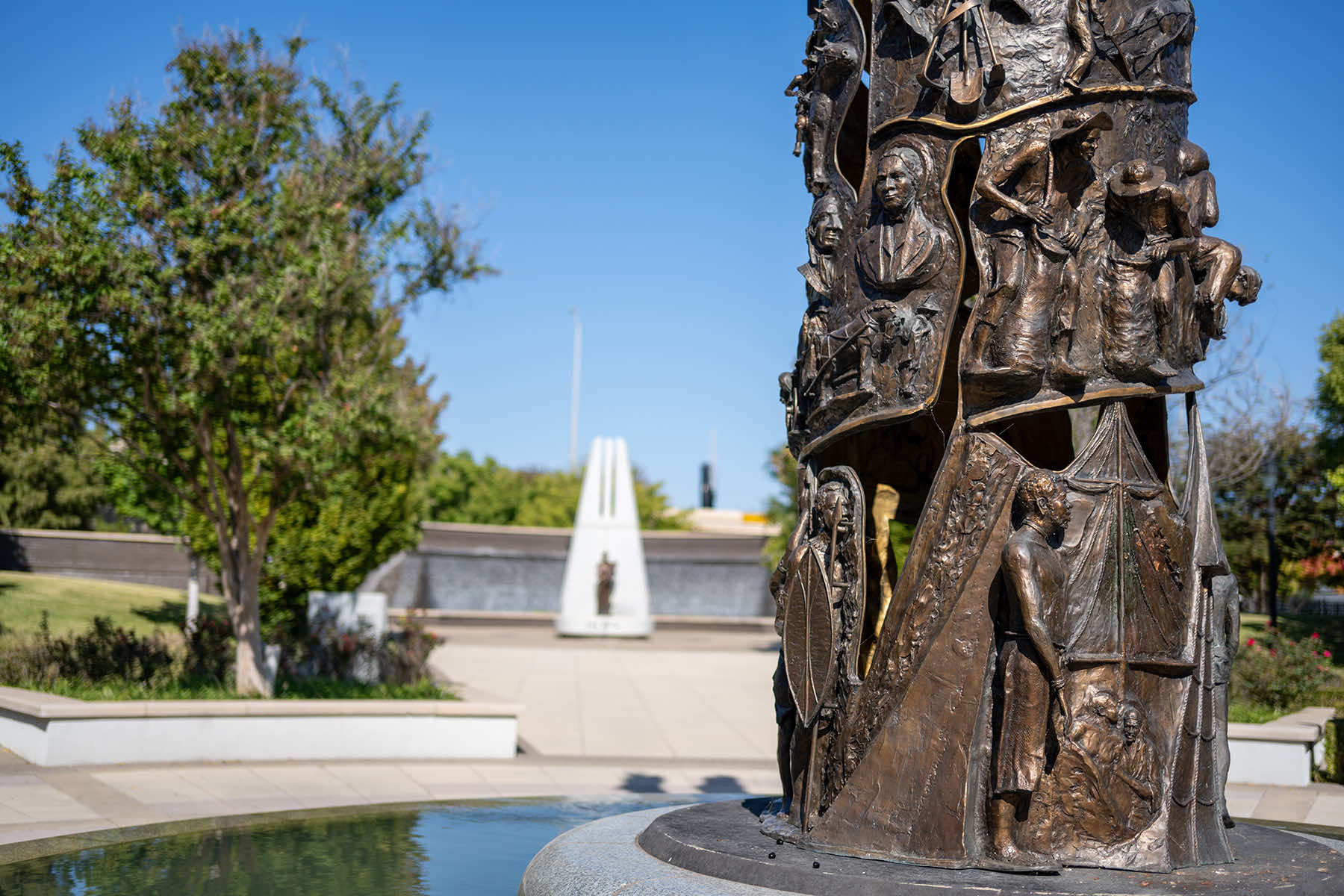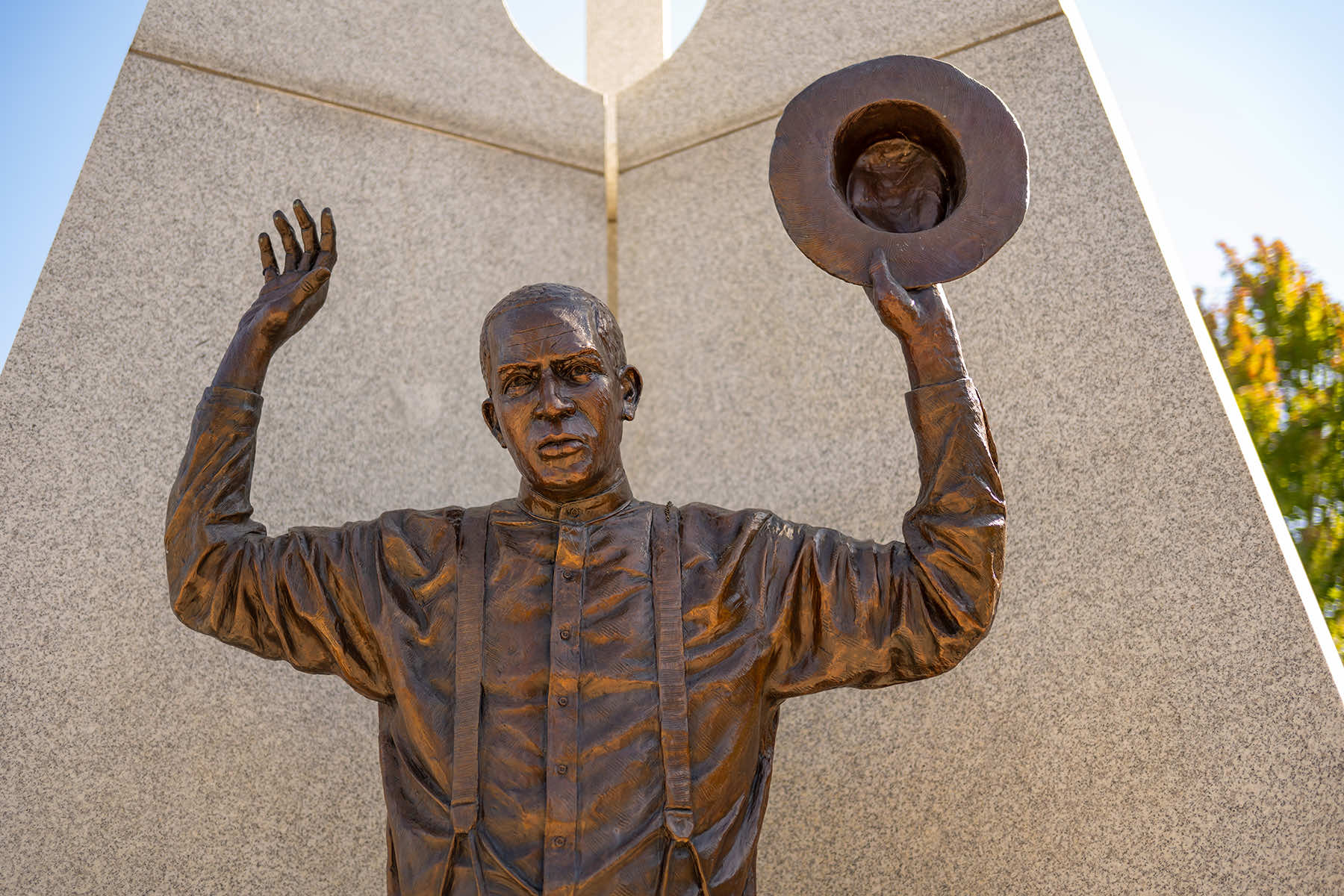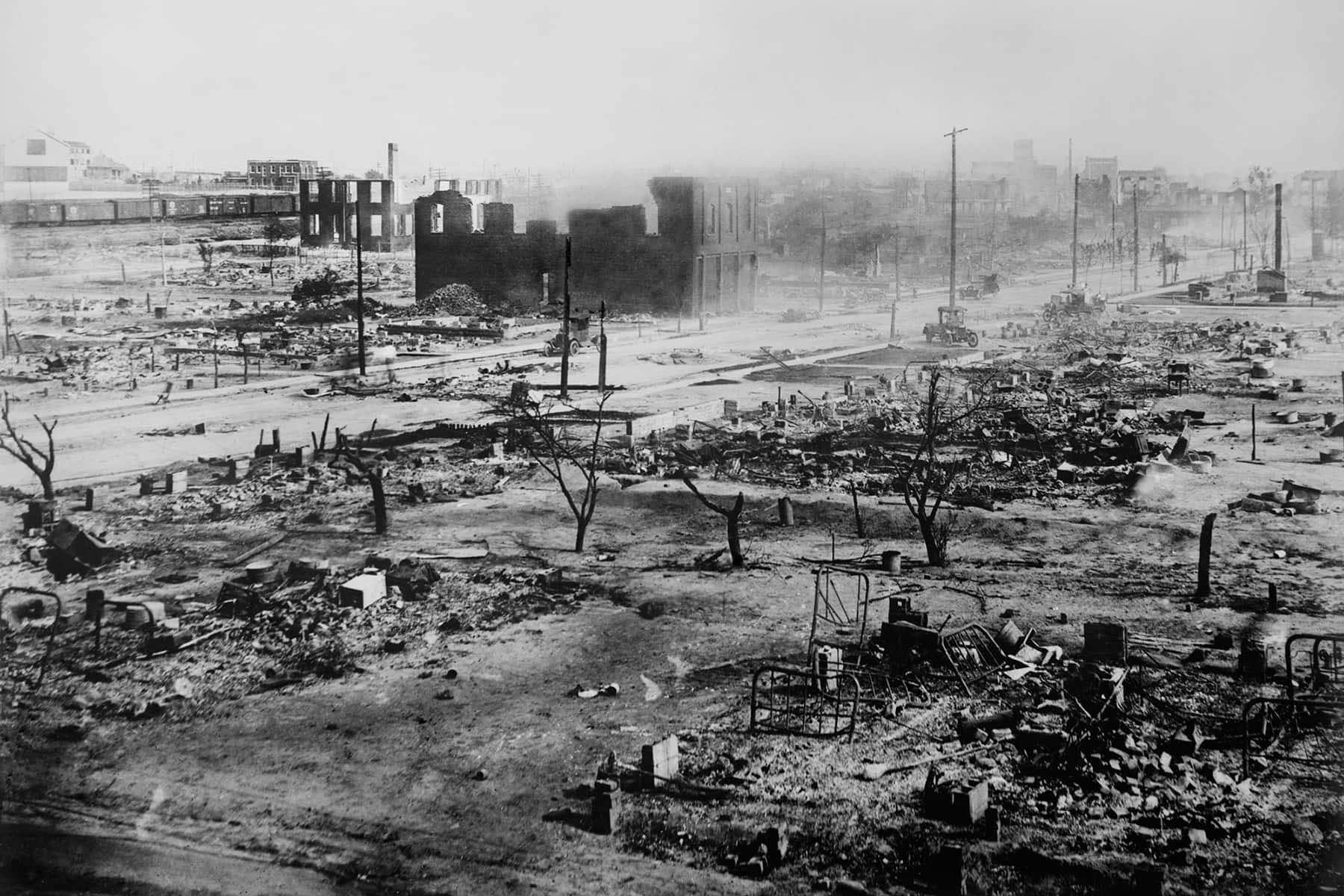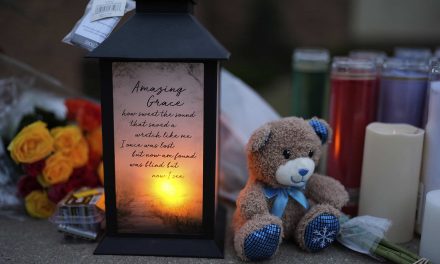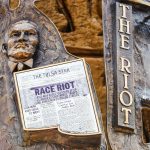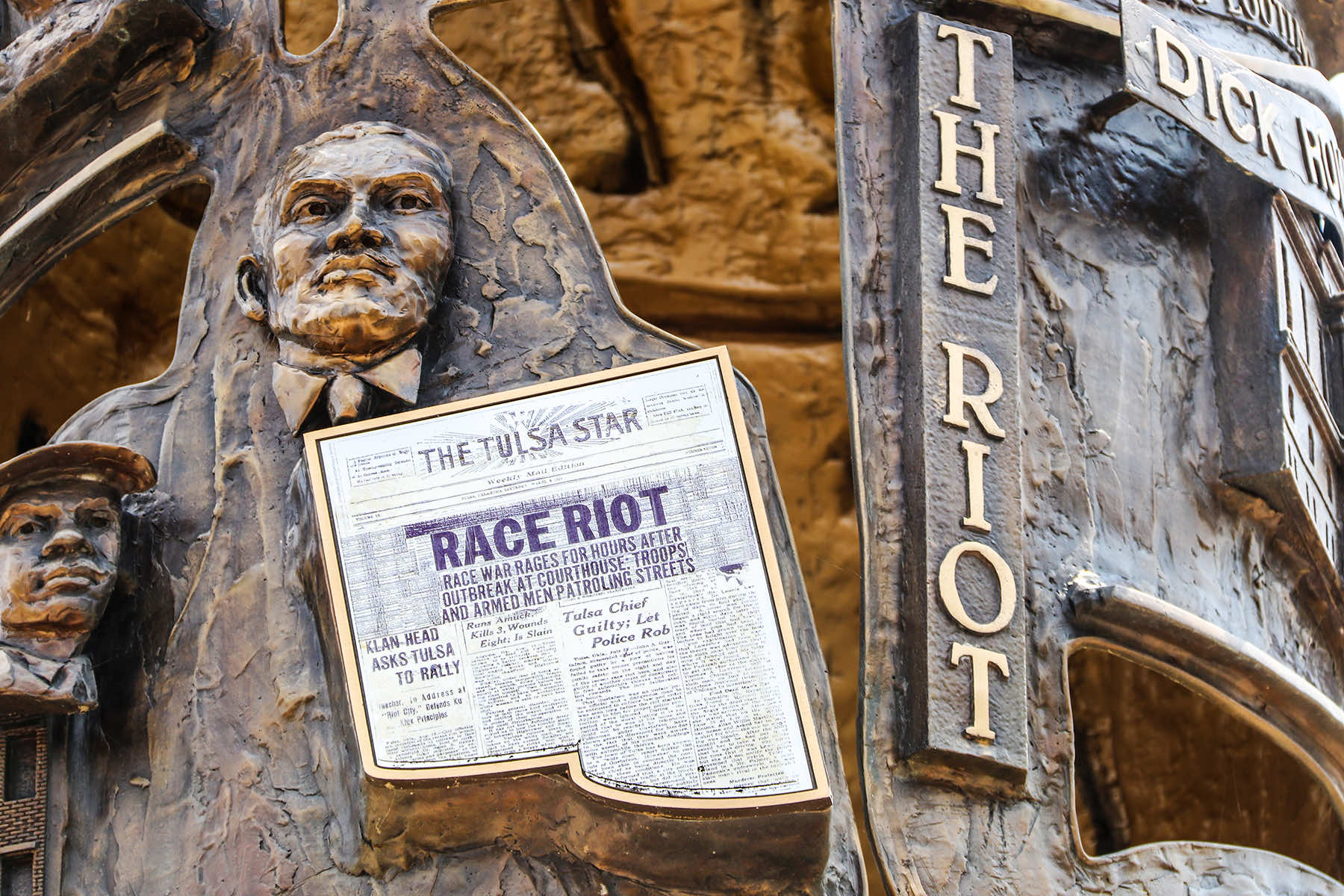
The federal government for the first time publicly addressed one of the deadliest episodes of racial violence in the nation’s history, an overdue acknowledgment of a racial violence that targeted Black Americans in 1921.
Just before Trump’s second inauguration in January, the Department of Justice released a 123-page report examining the deadly events surrounding the 1921 Tulsa Race Massacre.
The extensive investigation, carried out by career lawyers and investigators from the Emmett Till Cold Case Unit of the Criminal Section of the Civil Rights Division, represented the first time in over a century that the Department of Justice had officially accounted for the devastation that befell Tulsa’s Greenwood District, often referred to as “Black Wall Street.”
The report was based on the Justice Department’s review and evaluation of the Tulsa Race Massacre under the Emmett Till Unsolved Civil Rights Crimes Act. Assistant Attorney General Kristen Clarke of the Civil Rights Division originally announced the inquiry during a Cold Case Convening on September 30, 2024.
The Department’s findings, revealed after consulting surviving community members, descendants, historians, and the available historical record, pieced together a harrowing timeline of organized violence that left hundreds of Black residents dead, thousands homeless, generational wealth stolen, and an entire neighborhood destroyed.
“This report lays bare new information and shows that the massacre was the result not of uncontrolled mob violence, but of a coordinated, military-style attack on Greenwood. Now, more than 100 years later, there is no living perpetrator for the Justice Department to prosecute. But the historical reckoning for the massacre continues. This report reflects our commitment to the pursuit of justice and truth, even in the face of insurmountable obstacles. We issue this report with recognition of the courageous survivors who continue to share their testimonies, acknowledgment of those who tragically lost their lives and appreciation for other impacted individuals and advocates who collectively push for us to never forget this tragic chapter of America’s history.” – Justice Department Announces Results of Review and Evaluation of the Tulsa Race Massacre, January 10, 2025
A LEGACY OF VIOLENCE AND NEGLECT
The Tulsa Race Massacre occurred between May 31 and June 1, 1921, in the thriving Black neighborhood of Greenwood, which had earned the nickname “Black Wall Street” for its bustling shops, businesses, and financial institutions owned and operated by African Americans.
Although official records at the time drastically downplayed the severity of the violence, initially calling the event a mere “race riot,” many modern historians estimate that the death toll likely surpassed 300, surpassing the meager official toll of 36 fatalities.
In the immediate aftermath of the massacre, historians and journalists, particularly in Oklahoma, documented how local and state officials willfully ignored the plight of the survivors, refusing them meaningful relief.
Over 35 city blocks were burned to the ground, and thousands of Black citizens were forcibly detained in internment-like facilities. Local authorities systematically arrested and disarmed Black Tulsans, sometimes even before the violence reached its peak, and provided little to no protection against the onslaught of violent White mobs.
Details of the brutality were initially buried by local press or overshadowed in national news. It would not be until 80 years later when a state commission was convened in 2001 to explore the legacy of the massacre. That body helped renew public understanding of the devastation endured by Greenwood’s residents.
Yet the long gap between 1921 and any significant official investigation by a federal agency left survivors, descendants, and countless Americans asking why those responsible were never held accountable.
THE DOJ’S REVIEW: UNCOVERING SYSTEMATIC VIOLENCE
According to the new report, the spark that ignited the 1921 massacre was an allegation that a young Black man, 19-year-old Dick Rowland, assaulted a White woman inside an elevator. The local newspaper sensationalized the story, fueling racial tensions. Subsequently, a White mob that numbered in the thousands demanded Rowland’s lynching.
“The review revealed that the violent attack by as many as 10,000 White Tulsans destroyed Greenwood, a uniquely prosperous Black community. The attack was so systematic and coordinated that it transcended mere mob violence. The local sheriff called on Black men from Greenwood, many recently returned from service during World War I, to come to the courthouse to prevent a lynching. The White mob saw this effort to protect Rowland as an unacceptable challenge to the social order. The mob grew. A confrontation broke out, and when someone fired a shot, horrific violence erupted.”
Investigators concluded that Tulsa police officers had deputized hundreds of White men on the eve of May 31. Some of those individuals had been openly agitating for vigilante violence, and upon receiving badges, they quickly joined in an organized assault that escalated from chaotic unrest to what the DOJ describes as a deliberate “military-style” operation. The violence reached its apex on the morning of June 1 when a whistle signaled a shift toward systematic arson, forced disarmament of Black Tulsans, and armed detentions of men, women, and children.
A CITY’S COMPLICITY OF VIOLENCE
The report highlights the role of the local government in not only failing to prevent the violence but in actively contributing to it. White Tulsans took part in the mass destruction, as law enforcement not only declined to protect Greenwood residents but disarmed them, and held them in makeshift internment camps in the Tulsa Fairgrounds and other sites. Meanwhile, White vigilantes looted Black homes and businesses with impunity.
After the fires subsided, city officials obstructed recovery efforts by rejecting outside aid. They then cited the area’s supposed industrial potential to enact new fire codes that raised building costs for survivors, effectively forcing them from their neighborhood. Consequently, Greenwood’s residents were burdened with near total economic destruction. Some left Tulsa permanently, while others struggled to rebuild amid hostility and poverty.
Historians regard the orchestrated violence, combined with deliberate official neglect, as uniquely devastating. Across the United States, anti-Black violence was tragically common in the early 20th century, but Tulsa’s scale and thoroughness stood out for the systematic brutality. It has frequently been labeled one of the worst single incidents of racial terror in American history.
LEGAL AVENUES FORECLOSED BY TIME
The core findings of the Department of Justice’s review underscore the bitter reality that, while the massacre’s atrocities were clear violations of human rights and be prosecutable as hate crimes, legal recourse is impossible today. The potential suspects, if any were still alive, would be well over 115 years old.
“Had today’s more robust civil rights laws been in effect in 1921, federal prosecutors could have pursued hate crime charges against the massacre’s perpetrators, including both public officials and private citizens. In addition, if modern interpretations of civil rights laws were in effect in 1921, police officers, public officials, and any who acted in concert with such persons could have been prosecuted for willfully violating the civil rights of massacre victims. Many of these legal avenues, however, were not available in 1921. The few avenues for federal prosecution that were available in 1921 were not pursued.”
On top of those obstacles, the Constitution’s Confrontation Clause requires that living witnesses be presented to testify against accused individuals. In addition, the statutes of limitations for federal civil rights offenses have also long since expired.
HISTORICAL CONTEXT AND SUPPRESSED MEMORY
For decades, the massacre was scarcely discussed outside the Greenwood community. Survivors and their descendants repeatedly struggled to have the event recognized in history books or government proclamations. Over time, the truth of the massacre began to trickle out, thanks to the tireless work of historians, activists, journalists, and community organizers.
By the late 1990s, renewed interest led to the formation of the 1921 Tulsa Race Riot Commission, which published its findings in 2001, affirming accounts of wide-scale destruction, systematic looting, and intentional suppression of assistance.
Commemorations, including the construction of the John Hope Franklin Reconciliation Park, have sought to honor those who perished and those who, despite staggering hardship, attempted to rebuild.
Grassroots genealogical efforts have also uncovered additional evidence of mass graves, prompting renewed questions about the documented death toll. Although many of these inquiries remain unresolved, they underscore how the violence of 1921 continues to reverberate in Tulsa’s collective memory.
AN OVERDUE FEDERAL ACKNOWLEDGMENT
The newly released DOJ report marks the first time the federal government has officially recognized the magnitude of the attack in a detailed public record. The response, though more than 100 years late, carries significant symbolic weight.
Assistant Attorney General Clarke said she hoped the report would stand as a testament to what transpired and ensure that future generations cannot ignore the horrors Greenwood endured.
“The report recognizes that some may find the department’s inability to prosecute a painful or dissatisfying outcome. However, the review recognizes and documents the horrible events that occurred as well as the trauma and loss suffered by the residents of Greenwood. While legal and practical limitations prevent the perpetrators of the crimes committed in 1921 from being held criminally accountable in a court of law, the historical reckoning continues. Legal limitations may have stymied the pursuit of justice, but work continues to ensure that future generations understand the scale and significance of this atrocity.”
Crucially, the Department of Justice also intends to convene with community members, survivors, and descendants of the massacre, opening a long-overdue dialogue on the federal government’s role in acknowledging past wrongs.
The report is a continuation of a broader push sparked by the Emmett Till Unsolved Civil Rights Crimes Act of 2008, reauthorized in subsequent years to reexamine racially motivated crimes that went unpunished in an era of legally sanctioned discrimination.
FROM SILENCE TO SCRUTINY
The 123-page document serves as both a record of state-sanctioned violence and a cautionary tale about the dangers of racial bias in law enforcement. It also stands as an example of how crimes of the past can remain hidden or distorted without a comprehensive public inquiry.
Civil rights activists assert that greater transparency about the Tulsa Race Massacre could prompt renewed conversations about restitution or reparative justice. Yet the DOJ made clear that any criminal prosecution is precluded by legal and temporal limitations.
While some Tulsans are hopeful that the Justice Department’s work might lead to broader recognition or even restitution for descendants of survivors, many are aware that historically, official acknowledgments do not necessarily translate into tangible remedies.
Efforts to secure compensation for survivors and heirs have repeatedly stalled in court, facing a combination of legal roadblocks and municipal resistance.
PRESSING FORWARD DESPITE OBSTACLES
Though the DOJ’s findings cannot bring charges against any offender, they confirmed the fundamental truths long asserted by survivors and historians. Clarke’s Cold Case Unit, established to investigate historical civil rights-era murders, has signaled that such reviews carry both educational and moral imperatives.
Such meticulous examinations help fill an evidentiary void caused by decades of inaction, offering the public, and especially younger generations, a documented and uncensored record of systemic racial violence.
By laying out in precise, sourced detail the chronology of events, the Department of Justice’s work underscored that the so-called “riot” was in fact an organized military action against a Black community. That runs counter to some older narratives that dismissed the massacre as a spontaneous outbreak of lawlessness.
THE ROAD BEYOND THE DOJ REPORT
The ultimate hope, as expressed by many community leaders in Tulsa, is that the new level of federal acknowledgment will reverberate far beyond Oklahoma’s borders. Scholars of civil rights history say the Tulsa Race Massacre should serve as a reminder of what can happen when bigotry merges with unchecked authority.
Public interest in the massacre has grown in recent years, with documentaries, books, and national news features highlighting the stories of survivors who still, a century later, grapple with the loss of ancestors, generational trauma, and the denial of justice.
Meanwhile, local institutions and nonprofits in Tulsa have ramped up educational outreach, hosting symposiums and publishing archival materials to shed light on the true nature of Greenwood’s destruction. Advocates emphasize that confronting this history is critical for bridging racial divides that have persisted into the 21st century.
While there can be no criminal prosecutions, the DOJ’s report concludes on a note of acknowledgment for Greenwood’s survivors, many of whom spent decades living in the shadow of an event that was rarely recognized by official sources.
As antilynching advocate Ida B. Wells said, “The way to right wrongs is to turn the light of truth upon them.” This report aims to do just that.
In a nation still grappling with racial disparities and debates over how best to confront a legacy of injustice, the DOJ’s report on the Tulsa Race Massacre offers a sobering acknowledgment.
It also marks a critical step forward in fulfilling the promise to uncover and share the truth of Greenwood’s destruction. Though justice in the courts is no longer possible, the historical record has been reinforced, ensuring that Tulsa’s tragedy is neither forgotten nor distorted so that the full story of Black Wall Street’s devastation can finally be told.
© Photo
The Library of Congress, and Everett Collection, Vineyard Perspective, LostInTheMidwest (via Shutterstock)

